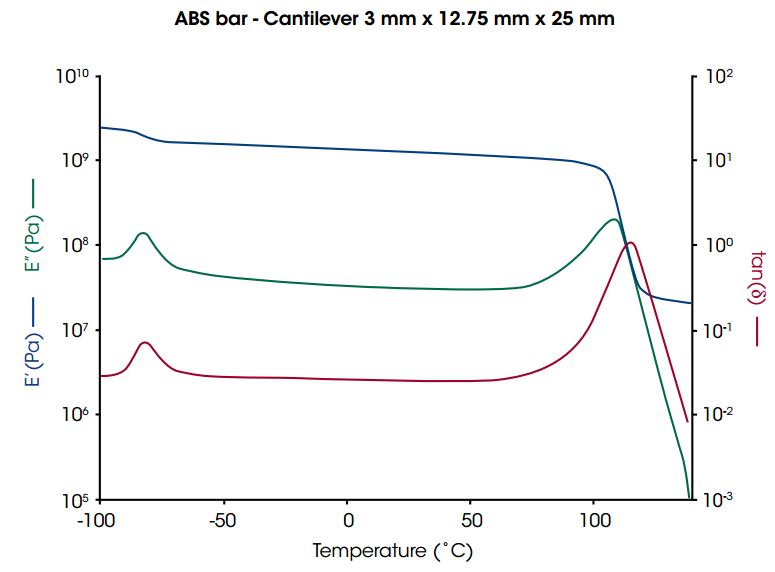
Analysis (DMA)
Dynamic Mechanical Analysis (DMA)
The DMA Mode adds a new dimension for testing of solid and soft-solid materials. Now in addition to the most sensitive and accurate rotational shear measurements, the Discovery Hybrid Rheometer can deliver accurate linear Dynamic Mechanical Analysis (DMA) data. Compatible with the ETC Oven, the new DMA capability is available in: film tension, threepoint bend, cantilever, and compression. The new axial DMA capability complements solid torsion testing by providing a direct measure of the modulus of elasticity, or Young’s Modulus (E). The new DMA mode is ideal for identifying a material’s transition temperatures and provides reliable measurements over the instrument’s full range of temperatures. This unique capability is enabled by the DHR’s active Force Rebalance Transducer (FRT) and patented magnetic bearing. This technology enables amplitude-controlled oscillatory deformation in the axial direction, a capability that is not possible with instruments that employ air bearings or passive normal force measurements.
Specifications |
|
| Minimum Force in Oscillation | 0.1N |
| Maximum Axial Force | 50N |
| Minimum Displacement in Oscillation | 1μm |
| Maximum Displacement in Oscillation | 100μm |
| Displacement Resolution | 20nm |
| Axial Frequency Range | 6×10-5 rad/s to 100 rad/s (105 Hz to 16 Hz) |
Features and Benefits
- Smart SwapTM technology for quick installation
- Force Rebalance Transducer Motor Control • 3-Point Bending
- Film/Fiber Tension
- Single and Dual Cantilever (Clamped Bending)
- Parallel Plate Compression
- Axial Force Control tracks material stiffness and automatically adjusts static load
- Superior temperature control with the Environmental Test Chamber (ETC) up to 600 °C
- Liquid Nitrogen cooling to −160 °C
- Air Chiller System (ACS-3) provides liquid nitrogen-free cooling to −85 °C
- Optional sample visualization with ETC camera
DMA Applications
Parallel Plate

- Polyethylene terephthalate (PET)
- Three major transitions are observed
- ß-transition: -80 °C α-transition (Tg): 111 °C
- Melting: 236 °C
- Reveals semi-crystalline structure with two amorphous relaxations
Disposable Plate

- Acrylonitrile butadiene styrene (ABS)
- Two major transitions
- Tg (butadiene): -82 °C
Tg (styrene) 115 °C - Indicates incompatibility of the two monomers






